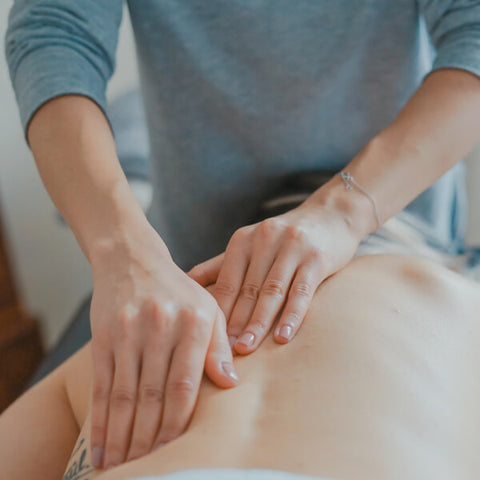WE TAKE PAIN RELIEF SERIOUSLY. EVERYTHING ELSE? MEH.
GET THE STRONGEST ALL-NATURAL & ORGANIC TOPICAL PAIN CREAM ON THE MARKET TODAY...& THE MOST INTERESTING.
PUNCHING PAIN IN THE FACE SINCE 2011.
WE TAKE PAIN RELIEF SERIOUSLY. EVERYTHING ELSE? MEH.
GET THE STRONGEST ALL-NATURAL & ORGANIC TOPICAL PAIN CREAM ON THE MARKET TODAY...& THE MOST INTERESTING.
PUNCHING PAIN IN THE FACE SINCE 2011.
WE TAKE PAIN RELIEF SERIOUSLY. EVERYTHING ELSE? MEH.
GET THE STRONGEST ALL-NATURAL & ORGANIC TOPICAL PAIN CREAM ON THE MARKET TODAY...& THE MOST INTERESTING.
PUNCHING PAIN IN THE FACE SINCE 2011.
WE TAKE PAIN RELIEF SERIOUSLY. EVERYTHING ELSE? MEH.
GET THE STRONGEST ALL-NATURAL & ORGANIC TOPICAL PAIN CREAM ON THE MARKET TODAY...& THE MOST INTERESTING.
PUNCHING PAIN IN THE FACE SINCE 2011.
WE TAKE PAIN RELIEF SERIOUSLY. EVERYTHING ELSE? MEH.
GET THE STRONGEST ALL-NATURAL & ORGANIC TOPICAL PAIN CREAM ON THE MARKET TODAY...& THE MOST INTERESTING.
PUNCHING PAIN IN THE FACE SINCE 2011.
WE TAKE PAIN RELIEF SERIOUSLY. EVERYTHING ELSE? MEH.
GET THE STRONGEST ALL-NATURAL & ORGANIC TOPICAL PAIN CREAM ON THE MARKET TODAY...& THE MOST INTERESTING.
PUNCHING PAIN IN THE FACE SINCE 2011.

The 5 Things You Need to Know to Get the Most Out of Your Topical Pain Reliever
5 min read
The topical pain relief market in the United States is currently a $2.5 billion industry. There are a lot of brands, some of them very well known, and this means there are a tremendous number of options available to you, the end consumer! Some topical analgesics are made with inferior materials, while others are premium quality. Usually, you get what you pay for. It may take some digging, but you should be able to find the analgesic cream product that works best for both you and your pocketbook!
Chances are high that you have used some over-the-counter topical pain cream, balm, ointment, oil, rub, salve, etc. before. If not, you can start here: What is a topical pain relief cream and how does it work?
For those with some experience with topicals, did you know that every time you use a topical cream for pain, you can get varying amounts of relief? Did you know that applying a topical pain balm before or after a shower can change the effectiveness? It sounds simple, but there's a lot more to maximizing the benefit of your wonderful topical pain relief lotion, oil, cream, gel, or salve. Let's find out how.

READ THE INGREDIENTS
There are so many people that don't read labels. It's unfortunate, because this is the ideal way to see what is inside the product you wish to buy before spending your hard-earned cash. You can also check the ingredients list against your own known allergies, find out whether carcinogenic raw materials are being used, or if the product adheres to your dietary or religion views.
In addition, the ingredients list should be as clean and natural as possible. There are two reasons for this. One, the skin is a permeable barrier. If the skin doesn't recognize the product being applied, it is possible you can get an adverse immune system reaction. And two, your liver has to process everything that gets absorbed. That includes toxic chemical ingredients, pesticides and other harmful compounds. Be mindful of what you use, because some products may provide great instant relief, but do more harm somewhere else in the body. In short, we encourage you to read ingredient labels. Knowledge is power. Ask questions. Compare products. Do research. Your health is at stake.
CLEAN SKIN
Our skin produces natural oils (called sebum) to help maintain the epidermis and dermis layers as well as defend against bacterial, fungal, & viral infection. These oils are produced in different amounts all over the body and provide a natural way to keep potentially harmful substances out.
But, this sebum will also keep your topical pain balm from, literally, getting under your skin. Therefore, in order to maximize the penetration of topical pain relief products, you can remove this sebum layer by gently washing the area with soap and water first. In short, remove the skin's protective sebum by washing area before applying topical pain relief formula.

RUB IT IN
Topicals need to make contact with the skin in order to work. This is because the active components, once applied, will begin to penetrate and provide pain relief to the local area of which it touches.
Don't get us wrong. It's perfectly fine just to apply your pain reliever and go. But, if you want to help your back pain relief ointment do it's job, rub it in! This forces the balm into the epidermal layer and gives it a little headstart with transdermal delivery and absorption. This shortens the time from pain to relief.
Massage is an even better option. If possible, you will want to massage the analgesic into the painful area to provide faster relief. Massage does three things. It pushes the pain relief gel into the epidermis. It encourages blood circulation and lymph drainage for easier systemic absorption. Lastly, massage warms the treated area and reduces the skin's barrier properties, which leads us to the next section. In short, rubbing topical analgesics into skin is good. Massaging it in is better!

HEAT IT UP
Heat is great for the body. In regards to skin, warmth increases blood perfusion of the skin and reduces the natural lipid barrier to entry. In other words, you're getting more blood flow into the skin and better penetration of topical relief into the skin when you add heat. Now you know why putting pain cream on your body in cold weather can have a much different effect than in hot weather!
Another way to add heat to your painful knee, elbow, or ankle, is to wrap it! Anything from an elastic support bandage to a 1/4" neoprene sleeve can lock body heat into the target area and maintain warmth using your own body as a source. This type of temperature enhancement is a great way to heat treat the
We concur that heat helps with pain relief. More is not always better, especially in this case. Too much heat can increase the chance of irritation, rash, or other skin reaction when using topical analgesics. Therefore, be careful with any of the external heat sources (i.e. hot tub, sauna, heating pad, etc.) Body wraps are an easy, safe, and portable heating method for just about every body. In short, heating the treated area after applying your favorite pain fighting balm can encourage higher and faster penetration of the active compounds.

STORE IT PROPERLY
Everything has a shelf life. That's why expiration dates exist. Usually, the expiration date doesn't mean that your product is bad. More likely, it means that the full effectiveness of the pain cream has been reduced. Just in case, you can always check with the manufacturer.
To maximize the shelf life of your topical pain reliever, you should adhere to the storage instruction listed on the label. Otherwise, store the topical analgesic in its original container and closed, if possible, away from direct sunlight. Put the pain relief container in a place where the temperatures are steady and do not fluctuate greatly. Alternating hot and cold temperatures can cause your product to degrade very quickly, even if it is stored in a dark, dry location. If it is a natural product, such as Battle Balm, proper storage is very highly recommended. In short, most skincare products suggest storage in a dark, dry, temperate location.
Follow these simple rules and you can extend the life of your topical pain relief product, maximize the effectiveness, and get the most value out of the products you purchase.
Battle Balm lands a stiff-arm into the face of inferior pain relief products. Get the best, healthiest, cleanest, all natural & organic topical pain relief cream on the market. Buy "The Pain Reliever With Knockout Power!" today!
Leave a comment
Comments will be approved before showing up.
Subscribe
Sign up to get the latest on sales, new releases and more …

Signup for our Newsletter
Get current pain research, the latest discounts, inspiring stories, and much more delivered right to your inbox. Never spam, always top-notch information.
